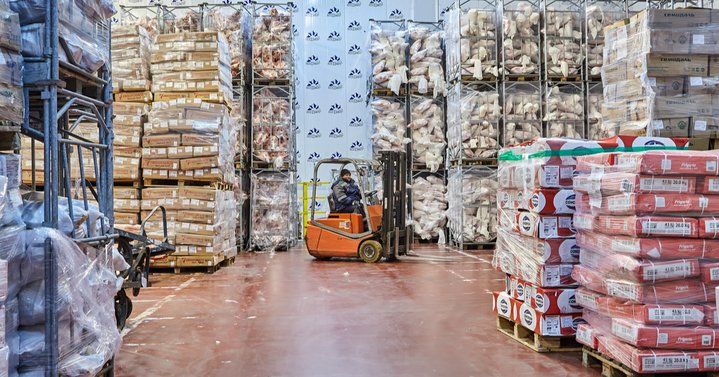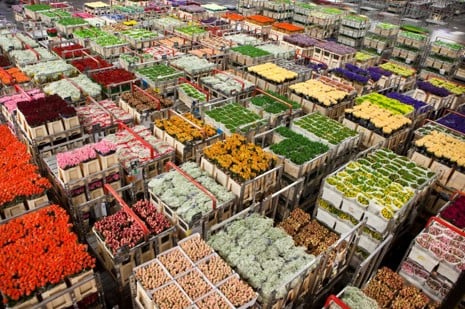Handling Perishables in Thai Exports: Challenges and Solutions
Thailand has long been recognized as one of Southeast Asia’s leading exporters of perishable goods. From tropical fruits like durian, mango, and longan to fresh seafood, poultry, and frozen food products, the country’s perishable exports are vital to its economy. According to Thailand’s Ministry of Commerce, the value of food exports exceeded USD 40 billion in 2023, with perishables accounting for a significant share.
However, exporting perishables presents unique logistical, regulatory, and environmental challenges. Ensuring freshness, managing cold chain logistics, and adhering to international standards require precision and local expertise. This is where working with experienced Thai logistics providers and local export agents becomes essential.
In this article, we’ll explore the key challenges in exporting perishables from Thailand and the practical solutions that can help businesses ensure product quality and regulatory compliance.
The Importance of Perishable Exports in Thailand
Thailand is a top exporter of:
-
Fresh and frozen seafood (shrimp, tuna, squid)
-
Tropical fruits (mangosteen, rambutan, durian)
-
Processed foods (ready-to-eat meals, frozen vegetables)
-
Poultry and meat products
Markets like China, Japan, the EU, and the Middle East are major importers of Thai perishables. However, their import requirements—ranging from phytosanitary certificates to traceability and shelf-life control—are growing more stringent.
To succeed in these markets, exporters must invest in robust handling systems, cold chain logistics, and strong coordination with Thai freight agents and customs specialists.
Key Challenges in Handling Perishables
1. Cold Chain Disruptions
Maintaining a consistent temperature from farm or factory to final destination is critical. Any break in the cold chain can compromise food safety and quality, leading to product rejection or spoilage.
Common issues include:
-
Inadequate refrigerated containers
-
Delays at customs or ports
-
Temperature fluctuations in transit
2. Limited Infrastructure in Rural Areas
While Thailand has well-developed export hubs like Laem Chabang Port and Suvarnabhumi Airport, producers in rural provinces often struggle with access to temperature-controlled storage or transport facilities.
3. Regulatory Compliance
Exporters must comply with:
-
Good Manufacturing Practices (GMP)
-
Hazard Analysis and Critical Control Points (HACCP)
-
Export standards of importing countries
For example, Japan and the EU require strict documentation on origin, pesticide use, and contamination levels—making traceability a must.
4. Short Shelf Life
Products like fresh fruit and seafood have limited shelf life. Exporters must balance speed and cost while ensuring goods reach shelves in top condition.
5. Market-Specific Packaging Needs
Different countries require specific packaging for perishables—such as vacuum sealing, modified atmosphere packaging (MAP), or reusable containers. Inadequate packaging can result in spoilage, leakage, or rejection.
Solutions to Thailand’s Perishable Export Challenges
1. Partnering with Cold Chain Experts
Thailand has a growing network of cold chain logistics providers that specialize in refrigerated trucking, temperature-controlled warehousing, and real-time monitoring.
Exporters can work with Thai logistics experts to ensure:
-
End-to-end cold chain visibility
-
Smart sensors for temperature monitoring
-
Coordinated handoffs between storage and shipping
✅ Tip: Use companies certified under Thai FDA and ASEAN Cold Chain standards to minimize compliance risk.
2. Utilizing Modern Export Hubs
Hubs like:
-
Laem Chabang Port (with refrigerated container yards)
-
Suvarnabhumi Cargo Terminal (offering perishable zones with fast-track clearance)
offer advanced infrastructure for exporters of perishables.
Explore Thai port infrastructure: Thailand-Agent.com/ports
These facilities also allow for quick transshipment to neighboring ASEAN markets.
3. Working with Thai Export Agents
A Thai export agent can help:
-
Manage export documentation and permits
-
Coordinate with customs for faster clearance
-
Negotiate with logistics partners
-
Ensure proper labeling and packaging
With strong local networks, agents help mitigate customs delays—particularly valuable when shelf life is at risk.
Learn more: Why Work with Thai Export Agents
4. Implementing Traceability Systems
Digital tools like blockchain, QR-code labeling, and RFID tracking help maintain transparency across the export process.
This is particularly important for:
-
Organic produce
-
Halal-certified meat
-
Products bound for the EU or US markets
The Thai Ministry of Agriculture supports exporters in adopting traceability tech through grants and training programs.
5. Customized Packaging Solutions
Smart packaging protects perishables and can extend shelf life by:
-
Minimizing air exposure
-
Preventing leaks and condensation
-
Using thermal insulation materials
Thai suppliers now offer eco-friendly, biodegradable packaging options—allowing exporters to meet both freshness and sustainability goals.
Export Case Study: Thai Durian to China
Durian exports to China have exploded in the past five years, especially via the China-Laos Railway, which has reduced shipping time by nearly 50%. Thai exporters have adapted by using:
-
Pre-cooling facilities in Chanthaburi
-
Vacuum-sealed packaging
-
GPS-monitored refrigerated containers
With the support of logistics agents, exporters can now deliver fresh durian to Kunming in under 3 days—preserving aroma, taste, and texture.
Government and Institutional Support
Thailand is actively promoting perishable exports through:
-
The Department of International Trade Promotion (DITP)
-
Board of Investment (BOI) incentives
-
Customs fast-track lanes for perishables
-
Public-private initiatives to improve rural cold chain infrastructure
To explore support programs, visit: https://www.ditp.go.th
Conclusion
Thailand’s perishable exports are poised for growth—but exporters must overcome significant logistical and regulatory hurdles. Maintaining a cold chain, investing in smart packaging, and working with local agents can make all the difference between a profitable shipment and one that’s rejected or spoiled.
Businesses aiming to export Thai perishables should collaborate with experienced agents and logistics partners to ensure compliance, freshness, and timely delivery.
Explore how Thailand-Agent.com can help you streamline your perishable exports and access global markets with confidence.


